
by Fronetics | May 18, 2017 | Blog, Leadership, Supply Chain
Add these books to your summer reading list to stay on top of industry trends and jump start your professional development.
“Education is the passport to the future, for tomorrow belongs to those who prepare for it today.” Malcolm X
Nikki Vazeos, regional sales manager at Veritiv, a leading North American distribution company, requires all of her sales reps to read one book a quarter that deals with professional development, sales techniques, or distribution trends and write a brief summary on how it applies to their day-to-day business. I always have found this kind of assignment to be beneficial on many different levels: professional growth, staying on top of industry trends, and of course, continuing education outside of the office.
If you’re a supply chain professional looking to build your summer reading list, this post is for you. Here are 5 highly recommended books that will jump start your professional reading.
5 books for supply chain professionals
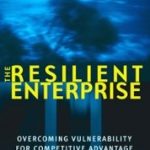 1) The Resilient Enterprise
1) The Resilient Enterprise
The Resilient Enterprise by Dr. Yossi Sheffi, Elisha Gray II Professor of Engineering Systems at MIT and Director of the MIT Center for Transportation and Logistics, has become one of the most influential supply chain resiliency books since its publication. Though published back in 2005, the book is still extremely relevant using numerous case studies and cautionary tales of some of the world’s largest companies. Dr. Sheffi explores high-impact/low-probability supply chain disruptions and the tools companies can use to reduce the vulnerability of their supply chains while fostering an overarching culture of resiliency.
 2) The Inevitable
2) The Inevitable
The Inevitable by Kevin Kelly guides its readers through the 12 technological imperatives that will shape the next 30 years and transform our lives. Kelly provides an optimistic road map for the future, showing how the coming changes in our lives — from virtual reality in the home to an on-demand economy to artificial intelligence embedded in everything we manufacture — can be understood as the result of a few long-term accelerating forces. Kelly both describes these trends — flowing, screening, accessing, sharing, filtering, remixing, tracking, and questioning — and demonstrates how they overlap and are codependent on one another. These larger forces will completely revolutionize the way we buy, work, learn, and communicate with each other. By understanding and embracing them, says Kelly, it will be easier for us to remain on top of the coming wave of changes and to arrange our day-to-day relationships with technology in ways that bring forth maximum benefits.
 3) The 360° Leader
3) The 360° Leader
The 360° Leader by John C. Maxwell offers an in-depth look at the application of leadership principles, even when you’re not the boss. Maxwell asserts that you don’t have to be the “main” person to impact your organization. The book suggests tangible ways to influence peers and superiors and become a more valuable member of your team.
 4) Good to Great
4) Good to Great
Built to Last, a book published by Jim Collins in 1994, looks at 18 companies that have triumphed over time, and how long-term sustained performance can be built into a company’s DNA over time. In Collins’ follow-up book, Good to Great, he concludes that it is possible, but it takes a lot of hard work and dedication.
Collins and his team of researchers began their quest by sorting through a list of 1,435 companies, looking for those that made substantial improvements in their performance over time. They finally settled on 11 — including Fannie Mae, Gillette, Walgreens, and Wells Fargo — and discovered common traits that challenged many of the conventional notions of corporate success. At the heart of those rare and truly great companies was a corporate culture that rigorously found and promoted disciplined people to think and act in a disciplined manner.
 5) Executive Presence
5) Executive Presence
Executive Presence by Sylvia Ann Hewlett, a noted expert on workplace power and influence, shows you how to identify and embody the Executive Presence (EP) that you need to succeed. EP is a combination of qualities that true leaders exude, a presence that shows you’re in charge or deserve to be.
Articulating those qualities isn’t easy, however. Based on a nationwide survey of college graduates working across a range of sectors and occupations, Sylvia Hewlett and the Center for Talent Innovation discovered that EP is a dynamic, cohesive mix of appearance, communication, and gravitas. While these elements are not equal, to have true EP, you must know how to use all of them to your advantage.
Related posts:
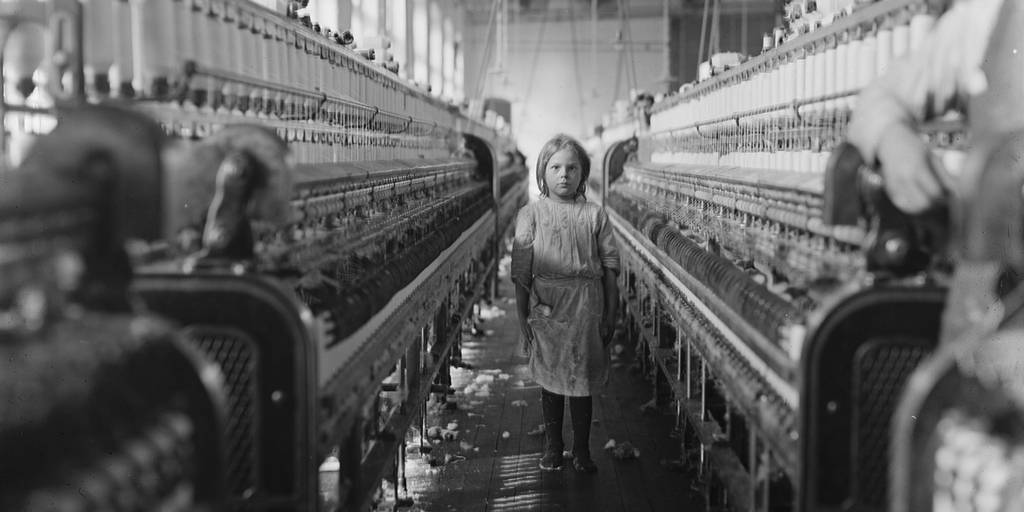
by Jennifer Hart Yim | May 17, 2017 | Blog, Current Events, Supply Chain
Legislation like the California Transparency in Supply Chains Act gives consumers tools to monitor companies who violate human trafficking and child labor standards.
This article is part of a series of articles written by MBA students and graduates from the University of New Hampshire Peter T. Paul College of Business and Economics.
The California Transparency in Supply Chains Act (hereinafter “California Transparency Act”) took effect in 2012. This state law applies to certain companies satisfying requirements as stipulated under the act. But if you are not doing business in California, does the law affect you?
The economy of California is big enough to be the 6th largest economy in the world, and her GDP is the largest in the U.S. Even though the California Transparency Act is state law, it seems inevitable that it will affect the U.S. economy in general.
Why Do We Need a Transparency Act?
Today, supply chain is a critical system in any business. The absence of one of its components could stop business production.
Such disruption can occur as a result of strikes or other work stoppages by laborers who have been trafficked or who are paid little or nothing for forced work. One good example is the Coalition of Immokalee Workers (CIW) representing tomato pickers in Florida. CIW has implemented a Fair Food Program, in which large retailers buying tomatoes pay a penny more per pound to fund better wages and to improve working conditions for tomato pickers. Since 2001, more than thirteen companies such as McDonald’s, Subway and Burger King have joined the program. But Wendy’s has not yet, causing the company to suffer criticism and boycotts from customers.
The need for such programs to improve working conditions is great, as tragedies such as Rana Plaza remind us. In 2013, the 8-story garment factory supplying to global brands collapsed in Bangladesh, killing 1,135 workers. Three months earlier, fire in another garment factory sewing clothes for Western companies killed seven workers, two of whom were just teenagers, ages 15 and 16.
Legally speaking, human trafficking and child labor are illegal in every country. 166 countries are parties to the Protocol to Prevent, Suppress and Punish Trafficking in Persons, Especially Woman and Children (aka “the Palermo Protocol”). However, violations of these laws are commonplace.
Why? In most countries, using trafficked workers and child labor is punishable under criminal law. So when it occurs, who goes to a jail? Actually, no one goes to a jail. Just a fine is imposed on the company violating of law.
In addition to the demand for cheap labor and services, the lack of meaningful law enforcement makes these practices continue. Civil liability and monitoring by good citizens are the most effective ways to decrease human trafficking and child labor. The California Transparency Act will provide a systematic process to oversee companies and to impose civil liability on illegality.
The California Transparency Act
The California Transparency Act is the first state law in the U.S. specifically addressing slavery and human trafficking in supply chains.
It applies to any business with $100 million in gross worldwide revenues that is doing business in California, and requires any subject business to disclose its efforts to eliminate slavery and human trafficking from their direct supply chains. The disclosure must provide the information of retail sellers or manufacturers, including verification of product supply chains, audit of suppliers, certifying materials, maintaining internal accountability, and training.
Those violating this act will be subject to action brought by the Attorney General for injunctive relief. If you want to see how this system works, go to a company’s website that you think does business in California, such as Trader Joe’s.
Federal Supply Chain Transparency Act
Four years after the California Transparency Act was enacted, Rep. Carolyn Maloney (D-NY) introduced a federal transparency law, the Business Supply Chain Transparency on Trafficking and Slavery Act of 2014, but it was never finalized. She reintroduced the bill in 114th Congress, but it was referred to the committee and did not go forward.
However, the federal regulation required by president Obama’s executive order titled Strengthening Protections against Trafficking in Persons in Federal Contracts was published in 2015. New FAR (Federal Acquisition Regulation) prohibits several practices for contractors, subcontractors and their agents, including denying access to the employee’s identity or immigration documents, using misleading or fraudulent recruitment practices, etc.
Transparency Act in the E.U.
In 2014, the European Parliament enacted Directive 2014/95/EU, which requires that public interest entities with more than 500 employees report information regarding efforts they are making to manage social, environmental and governance-related issues. The disclosure includes a non-financial statement on policies, outcomes and risks relating to social matters, and respect for human rights. The non-financial statement must provide a description of the policies pursued by the organization, the outcome of those policies, the principal risks related to those matters linked to the organization’s operations, and non-financial key performance indicators.
No specific penalty for failure to comply is stipulated. However, the directive instructs member states to ensure adequate and effective means for the guarantee of disclosure on non-financial information. The directive entered into force in January 1, 2017. As of December 6, 2016, most member countries had taken legislative measures to abide by the directive.
One example is the U.K. Modern Slavery Act, enacted in 2015. Part 6 of the act, entitled Transparency in Supply Chains Disclosure, imposes certain disclosure requirements on businesses. The disclosure must include information about the organization’s structure, its business and its supply chains, its policies in relation to slavery and human trafficking, its due-diligence processes in relation to slavery and human trafficking, a risk of slavery and human trafficking and its steps to manage that risk, and training available to its staff. The duties imposed on commercial organizations by this act are enforceable by the Secretary of State bringing civil proceedings.
France also enacted legislation defining a duty of vigilance for parent companies and their subcontractors in 2016, according to a promulgated document in 2017. The law applies to companies operating in full or in part on French territory with at least 5,000 employees when the head office is located in France, or 10,000 employees when the head office is located abroad. The law provides that multinational firms carrying out all or part of their activity on French territory shall establish mechanisms to prevent human rights violations and environmental damages throughout their supply chains. If the company does not prepare a vigilance plan and fails to comply with the formal judicial notice, it may be sanctioned with fines up to €10 million. The amount of this fine may reach up to €30 million if failure to develop a plan leads to injuries that could have otherwise been prevented.
Conclusion
Many legislative measures have been introduced both domestically and internationally to maintain transparency in supply chain. Regardless of a number of efforts on supply chain transparency, one question is not yet clear: how these measures will affect the transparency of supply chain.
Someone might criticize that no powerful measure has been introduced allowing governments to control supply chains. However, I wonder why we think government has more power than people and communities to maintain supply chain transparency.
We consumers can nourish or contract business. Supply chain transparency law, including the California Transparency Act, will provide a tool for consumers to monitor companies and to take action when the laws are violated. That is why I am optimistic about future of the law.
About the Author
Soyoung Yook, J.S.D., Attorney at Law, New York, is an MBA candidate at the University of New Hampshire Peter T. Paul College of Business and Economics.
Related posts:

by Jennifer Hart Yim | May 16, 2017 | Blog, Current Events, Manufacturing & Distribution, Supply Chain, Warehousing & Materials Handling
Despite significant technological advancement, drones may have a limited impact on supply chain optimization in the near future.
This article is part of a series of articles written by MBA students and graduates from the University of New Hampshire Peter T. Paul College of Business and Economics.
From the military designs of the early 20th century to modern commercial development in 2017, drones have been making their presence widely known in the market. While military drones may have paved the way for commercial drone development, they have quite different purposes.
Drones provide much value, where traditional alternatives (such as helicopters or planes) fall short. Drone usage in supply chain optimization is still in its infancy. However, I am not convinced that drones are the solution going forward.
Note: For my analysis, I will be focusing on commercial drone usage in the supply chain.
A Timeline of Major Military Drone Development
- 1918: Kettering Bug. First modern drone concept used as a “flying bomb.”
- 1935: DH82B Queen Bee. Used as target practice for anti-aircraft weapon training.
- 1964: Lightning Bug 147SC. Used for surveillance.
- 2001: MQ-9 Reaper. Used as a hunter predator.
Source
Drones provide many advantages, such as mobility, cost effectiveness, ability to move goods, and camera technology. Although drone development is rapidly advancing, many challenges currently exist. Limited battery life, constrained operational range, collision liability, proneness to hacking, and even invasion of privacy are all legitimate challenges.
Commercial Drone Fast Facts
- Made of light composite materials.
- Typically have two to five rotors.
- Controlled by either remote control or GPS.
- Flight time ranges, but generally falls between 12-27 minutes.
- Battery powered.
- Operational range varies from 200 meters to 7 kilometers.
Current Drone Usage in the Supply Chain
Large retailers such as Walmart and Amazon are already investing significant capital in drone technology. On December 6, 2016, Amazon successfully completed its first beta trial of drone package delivery, called Prime Air, in Cambridge, U.K.
Here’s how it works:
- Customers place their orders online as usual.
- The package is prepped at the regional fulfillment center.
- Drones are then dispatched from the center with the package.
- Customers place QR codes on their property to indicate the drop-off point.
- The package is delivered at the customer’s address within 30 minutes.
- The drone is operated by GPS and handles up to five pounds of cargo.
To reinforce this effort, Amazon is currently expanding Prime Air in other parts of the U.K., France, Germany, and Italy. In addition, the company is seeking up to 1,300 small warehouse locations across Europe, with a prioritization for facilities near urban areas.
Walmart, on the other hand, is taking a different approach to managing their supply chain. Instead of focusing on package delivery, Walmart is testing the use of drones to monitor inventory in their warehouses.
Employees currently catalog merchandise with hand-held scanning devices and often need to use forklifts in the warehouse. Instead, the drone could move up and down the shelves cataloging inventory at a much quicker rate. Walmart claims that the drones “could help catalog in as little as a day what now takes employees about a month.” This program is expected to begin in at least one distribution center in 2017.
What about Legal Issues?
In the United States, commercial drone usage is still pretty limited. Below is a highlight of Federal Aviation Administration (FAA) commercial drone regulations.
- Must have a Remote Pilot (no GPS allowed).
- Must be less than 55 lbs.
- Must undergo pre-flight check.
- Must keep aircraft in sight.*
- Must fly under 400 feet.*
- Must fly during the day.*
- Must not fly over people.*
- Must not fly from a moving vehicle.*
*Indicates that these regulations can be waived.
Supply chain drone usage in the United States is currently limited due to these regulations. In the future, I expect many of these regulations to ease or change outright with advancements in drone technology. When this will occur is unknown.
However, other countries such as the United Kingdom are quicker to enact regulations by virtue of the Civil Aviation Authority (CAA). As a result, companies like Amazon have already been testing drones for supply chain optimization there.
Significant Hurdles
Although drone technology is gaining much media attention, there are legitimate challenges to drone commercialization in the supply chain.
While many legislative bodies attempt to develop drone regulations, concrete legislation is lacking in many countries due to fluid technological changes. In order for the market to fully develop, a legislative framework needs to be established. Companies will be reluctant to invest significantly in drone technology until legal parameters are established.
Another challenge is in regard to insurance and liability. With potentially thousands of (unmanned) drones flying only hundreds feet above the ground, insurance will surely be required. In the event of a drone collision with individuals, property, aircraft, or other drones, who then is liable? If the drone is piloted by a human, would he/she be liable? On the other hand, if the drone is GPS-enabled, would the technology be to blame? Surely some of these questions will be answered in contracts between insurance companies and suppliers, but with such uncertainty, premiums will undoubtedly be high.
Then there’s the question of rural vs. urban delivery. Amazon Prime Air is predominately testing drone delivery in rural areas. However, 80.7% of U.S. and 90.1% of the U.K. population live in urban areas.
Package deliveries in urban areas are via mailbox, left by the door, or hidden (to avoid theft). In other words, human judgement is used to deliver the package most appropriately. For customers in large apartment buildings, drone delivery is very limited. Perhaps these limitations could be offset with designated landing areas on rooftops, despite the fact that additional effort by the customer may be needed to retrieve the package.
Last, but certainly not least, is the impact of weather conditions. Wind, rain, snow, and extreme cold/heat all impact drone performance. Since current drones are not very heavy, any significant wind will 1) blow the drone around making it harder to control, and 2) use additional battery life to remain stable. Since drones incorporate many electronic components, rain and snow increase the chance of malfunction.
Furthermore, most drones utilize Lithium Polymer batteries — these batteries are prone to weaker performance in extreme cold and heat. According to Batteryuniversity.com, most Li-ion batteries stop functioning below -4°F. Additionally, battery performance is reduced 40% at 104°F and 50% at 113°F. The combination of all these weather conditions certainly provides logistical challenges for drone delivery and supply chain usage.
Is There Any Hope for Drones in the Supply Chain?
The short answer is yes, but in a limited manner.
With the logistical and technological challenges regarding drone delivery, I just can’t see e-commerce firms effectively managing the process outside of rural areas with optimal weather conditions. In the future, this could change, but it would require significant legal, technological, and customer adjustment for the process to be superior over the current state.
However, drones open other opportunities for supply chain optimization, such as warehouse inventory management (as with Walmart), infrastructure monitoring, surveying, or even security. For example, shipping firms such as FedEx or UPS could utilize drones to monitor traffic and optimize drivers’ routes based on real-time data. Additionally, energy companies could use drones — as opposed to helicopters or planes — to monitor pipelines. Finally, engineers could use drones to inspect dams, highways, and buildings more efficiently.
I have no doubt that the drone market will continue to expand. According to Visualcapitalist.com, by 2025, the U.S. economy is expected to see an increase of $82 billion and creation of at least 100,000 jobs. However, their impact to supply chain optimization remains vague to me.
About the Author
Matt Steckowych graduated from the University of New Hampshire in 2011, with a B.S. in Business Administration and is currently enrolled in the part-time M.B.A. program. He is a Salesforce.com Administrator at John Hancock in Portsmouth, NH.
Related posts:
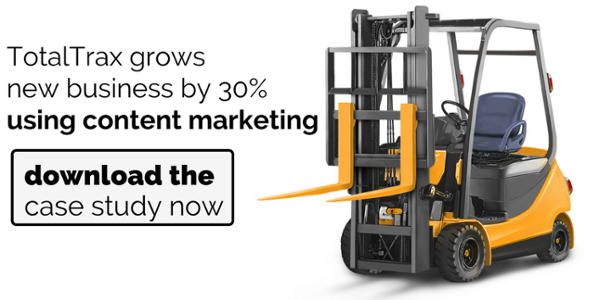
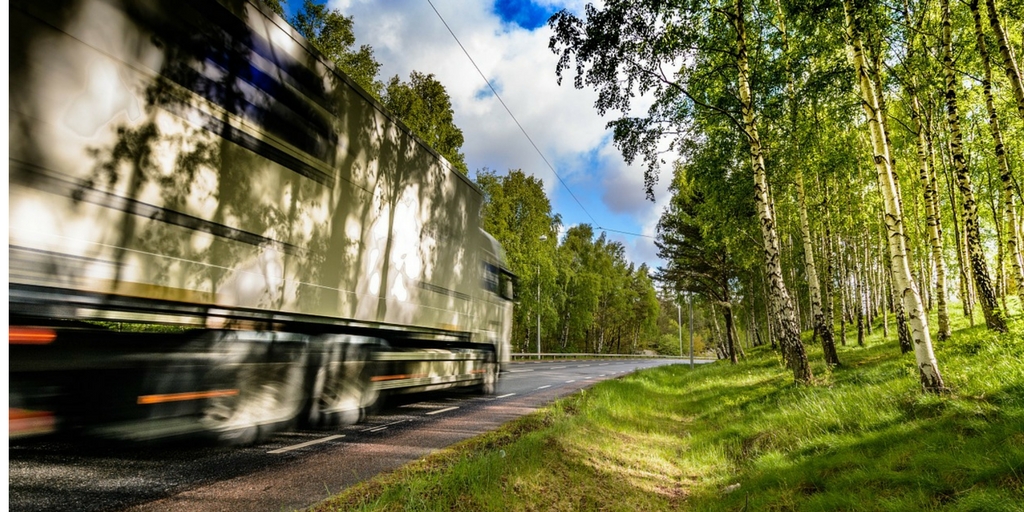
by Jennifer Hart Yim | May 15, 2017 | Blog, Current Events, Supply Chain, Transportation & Trucking
Autonomous vehicles will be implemented gradually, and will serve to increase a truck driver’s productivity rather than replace the driver completely.
This article is part of a series of articles written by MBA students and graduates from the University of New Hampshire Peter T. Paul College of Business and Economics.
“If I were a truck driver, I’d be looking to make a career change.” This has been my first thought when considering the future of self-driving cars, or autonomous vehicles.
It seems that the rise of autonomous trucks is inevitable. The major players in the automotive industry are heavily focused on developing autonomous vehicles, and newcomers like Apple and Uber are joining in the pursuit. The required technology is advancing every day, and the financial incentives associated with commercial transportation and vehicle services provide an opportunity that will likely result in early adoption when compared to personal vehicles.
The U.S. trucking industry
The trucking industry is massive, and the United States economy is hugely dependent upon it. Truck driving is the most popular occupation in 29 of the 50 states, with 3,500,000 truck drivers in the U.S. This means that in most of the country, one is more likely to meet a truck driver than any other occupation.
Seventy percent of total U.S. freight tonnage, an equivalent of 10.5 billion tons of freight per year, is transported via trucking. Every product you purchase, consume, or see in a store is dependent on trucking.
Amazingly, 38,000,000,000 gallons of diesel fuel are consumed each year to keep goods moving in the United States. The industry generates $750,000,000,000 in revenue each year, and is expected to grow rapidly. The shear size of this market provides an incentive for innovation, and it is expected that autonomous trucking will remove significant cost from the supply chain.
The driver shortage
Despite the importance of the trucking industry, there are fundamental problems. It is expected that almost 100,000 new truck drivers will be required every year for the next 10 years based on industry growth projections, and trucking companies have already been complaining about a driver shortage for years. Industry growth will only compound this shortage.
This has led companies to focus on recruiting and retention, but it has been difficult to attract new participants to the industry. The industry is a comparatively “old” industry. One challenge is that to obtain an interstate CDL license, one must be 21 years old. When most young people graduate high school at 18 or 19, this forces years of idle time before one is even eligible to drive a truck. As a result, the industry is not an option for new graduates, and new graduates start down other paths.
The driver shortage is increasing labor rates in the industry, and labor already constitutes a third of the costs of transport. Autonomous trucking would help remove some of these costs from the supply chain.
Autonomous-vehicle technology
Autonomous vehicles are not a new idea. The concept has existed since 1920, but it is only recently that the technology has manifested itself in a commercially viable way. LIDAR and RADAR technology has improved in recent years, and advanced cameras by companies such as MobileEye can help a human-less vehicle see.
Perhaps the largest contributor has been improvements in software development and decision-making algorithims — technology that is still in its infancy, but rapidly maturing. Vehicle-to-vehicle communications have recently advanced and have facilitated “platooning,” or a single driver commanding a platoon of vehicles. Google, Uber, Apple, Tesla, Volvo, Mercedes and others are investing in the technology. Interestingly, the market literature for the Mercedes Future Truck 2025 is adamant that the autonomous vehicles will only aid a driver, and that the driver will remain with the vehicle for the forseeable future.
Challenges
Even with rapid technological advancement, there are challenges to the adoption of autonomous trucks.
The industry is highly visible to the public, and recent technological development has sprouted a wide-spread fear of automation. It is likely that any accidents related to self-driving vehicles will receive the utmost scrutiny in a very public forum. Further, truck drivers are faced with challenging, and sometimes even life-or-death, decisions as part of their daily activities. In the event of an accident, a driver sometimes must decide how to crash, and the results of these decisions may cause death to the others involved in the accident.
Imagine, for example, a situation where the driver must choose to avoid a vehicle in the road, hit a pedestrian, or direct the truck off the road into a barrier. In each situation, someone will be hurt. If we rely on automation to make these decisions, we must program the right decision. As the computer system making the decision will be forced to make this decision with limited and imperfect information, even if the system is programmed “morally,” it will be forced to make imperfect life-and-death decisions.
Also to consider:
- Will society be comfortable delegating these decisions to automation?
- Who will purchase a vehicle that might choose to kill its passengers?
- In these type of situations, who is liable? The programmers? The truck manufacturer? The trucking company?
- If there is no individual responsible for the accident and there is no threat of imprisonment, only of fines, does this change the current traffic accident paradigm?
These questions must be confronted before the widespread adoption of autonomous vehicles.
The threat to drivers
If we accept that these challenges are resolved, it seems that the threat to truck drivers from autonomous vehicles is limited. The concept of completely driverless trucks is based on a drastic oversimplification of the trucker’s actual job. Over the road trucking has been rated toward the middle of the top 100 occupations for risk of being automated by the Brookings Institute.
Truck drivers do much more than just drive the truck, such as taking inventory, inspecting loads, manipulating loading docks, and placing orders. Many of these tasks are much more complicated than just conducting a truck on the interstate.
In the future, the truck driver will be reimagined as a logistics expert. A slogan from OTTO, the self-driving company responsible for the recent Budweiser beer run, sums up the current direction of the industry well: “We want to make it safe for the driver to sleep from exit to exit.”
The consensus amongst industry analysts is that the trucker will remain with the vehicle for the forseeable future. Even truck driver labor organizations such as ATBS are embracing autonomous vehicles as a productivity improvement in their industry.
Conclusion
Given the rapid growth of the industry, the current shortage of truck drivers and the demand for new drivers over the coming years, it seems like truck drivers should not be afraid of losing their jobs to automation in the short term. Likely, autonomous vehicles will be implemented gradually, and will serve to increase a truck driver’s productivity rather than replace the driver completely.
It is expected that over one-third of the trucks on the road in 2025 will be heavily automated, but complete autonomy is still in the distance future. Autonomous trucks may help to relieve the industry driver shortage, but they are unlikely to displace the millions of Americans that depend on driving truck for their livings.
Jacob Rossman is a manufacturing engineer at a major pharmaceutical company. His passions include futurism and technology. He lives in Rochester NH, with his wife Whitney, dog, cat and two pet rabbits.
Related posts:

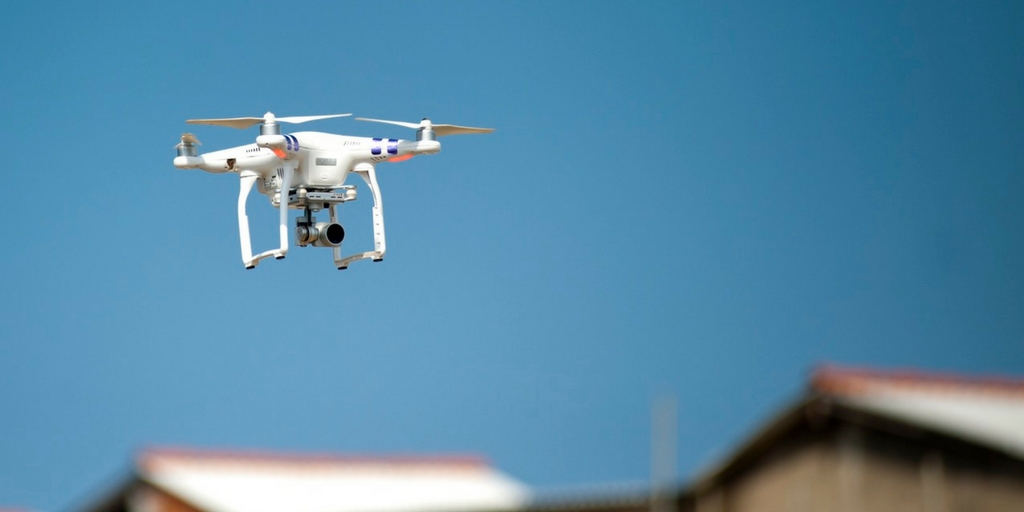
by Jennifer Hart Yim | May 11, 2017 | Blog, Current Events, Logistics, Manufacturing & Distribution, Supply Chain, Transportation & Trucking, Warehousing & Materials Handling
This post comes to us from Adam Robinson of Cerasis, a top freight logistics company and truckload freight broker.
Imagine a world where automation comes together with technology to deliver products without human intervention. An order is placed by a consumer. 3-D printers pick up the details and print the finished product. It’s then picked by robots from the shelves, packaged and placed into a self-driving truck. The trucks leave the facility, and drones are automatically dispatched from the truck to deliver products while moving. The truck never stops until arriving for reloading.
This example generates a huge amount of data that can leverage in the supply chain. But, the same data can have a drastic impact on transportation planners and agencies around the globe. While this example may still be a few years off, it is important that you understand how the top emerging trends in automation will shape supply chains and transportation processes in the coming years.
The Standard Definition & Components of Automation
Today: There is a standard definition of automation in the supply chain. Anything that can be handled via today’s computer systems can be automated. This includes billing, generation of bills of lading, compliance reports, and even movements throughout a factory or warehouse floor.
Historically, automation has been applied to virtual processes, like order auditing or customer service reports. However, the trends in automation are changing to reflect actions that function more like artificial intelligence, not just a search and locate program on the computer.
Additive Manufacturing
What is it?
Additive manufacturing includes all actions in the supply chain that can enhance existing factory production, if not replace it entirely. Additive manufacturing may be handled manually, but automating this process is as simple as turning on the power and connecting to the Internet of Things (IoT).
For example, additive manufacturing might involve the use of 3-D printers to create replacement parts at the store for consumers.
Today’s status: Unfortunately, the capacity of 3-D printers remains in infancy, capable of only producing simplified parts out of liquid polymers.
Virtual Reality Comes to the Forefront.
Meanwhile, Google Glass and other virtual reality tech are changing how customers complete their orders. In addition, the same technology can be overlaid with augmented reality to give repair technicians and individuals greater resource access when making repairs, checking order contents and fulfilling orders.
For example, augmented reality glasses will soon detect package dimensions and classify the package according to dimensional pricing models.
Today’s Status: Today, this technology is limited to automated identification and data capture (AIDC) applications. Advancements in virtual reality over the past year indicate its future might be much closer than “meets the eye.”
Additive manufacturing will gradually move products from warehouses and distribution centers to be closer to end-users. As a result, the amount of last-mile traffic may increase.
Robotics Enhance Inbound and Outbound Logistics for Shippers.
Another trend in automation involves robotics. By definition, robotics are the icons of automation. They perform functions at the request of a system or person, but more of today’s robotic systems are performing duties upon request from an order fulfillment system.
The order process automatically notifies robots in warehouses and triggers the flow of processes as seen in the opening example.
Robotics Improve Inbound and Outbound Logistics.
Robotics are not isolated to warehouse pulling for outbound logistics. They can be used to manage inbound and outbound processes and strategy. Through trends in automation and robotics, supply chain companies will have the tools and resources necessary to ramp up throughput and decrease product cycle from order to delivery. Therefore, more trucks and drivers will be needed, but the looming driver shortage and capacity crunch will trigger another automation trend.
Autonomous Vehicles/ Trucks
Automation begets automation. With advances in technology and the IoT, most major companies, including Uber, Facebook, Google, and Amazon, have launched autonomous vehicle and truck pilot programs.
These driverless vehicle programs will give supply chains access to a new inexhaustible resource for moving products, overcoming the challenges inherent in the driver shortage and capacity crunch.
The driver shortage and capacity crunch are likely to come to a head in 2017, as consumers demand more product, at lower costs and faster than ever before.
Some setbacks have occurred, like the first self-driving car wreck earlier this year. With each setback and challenge, companies have pushed back to overcome the obstacles.
In response to increased interest in driverless vehicles and trucks, the National Transportation Safety Board (NTSB) has issued recommendations and created an advisory panel to review ongoing driverless vehicle advancements and maintain public safety.
Transporters and supply chains will respond to this direction by leveraging the trends in automation and power of data to ensure compliance with increased government oversight, through the agencies you represent.
Companies have already tested cross-country driverless trucks, albeit with a person ready in the cab to take over in the event of a system failure. However, the wide-scale deployment of this level of driverless trucks is far from implementation.
In the interim, more automated vehicle systems will work in tandem with drivers to enhance safety and maintain vehicle control. Similar systems are already deployed in crash and pedestrian detection systems, automated braking and tracking control in today’s vehicles. It is not difficult to apply today’s technology and automated features to the fleets and drivers of 2017.
Trends in Automation: Whats the Potential?
The potential applications of this type of technology can include real-time traffic condition monitoring and warnings, redirecting traffic before pile-ups and accidents occur, similar to Google Maps’ capacity to show traffic congestion in real-time.
Data through such systems can automatically feed back into transportation planners’ systems to automatically change signal phase and timing and enable immediate rerouting or adjustment of traffic flow on a broader scale.
Related posts:

by Jennifer Hart Yim | May 10, 2017 | Blog, Current Events, Logistics, Strategy, Supply Chain
Updated January 16, 2025
Starbucks’ closely managed supply chain may be the key to the premium coffee giant’s success.
Highlights:
- Starbucks attributes much of its success to its vertically integrated supply chain, managing every step from coffee bean sourcing to final cup, allowing for consistent quality control and ethical sourcing practices across its global operations.
- Unlike its competitor Dunkin’ Donuts, which outsources most operations, Starbucks directly manages relationships with 300,000 coffee growers worldwide through its Coffee and Farmer Equity (C.A.F.E.) standards, ensuring both quality standards and ethical practices.
- This supply chain strategy has contributed to Starbucks’ significant market dominance, with the company generating $32.2 billion in revenue in 2023 and operating nearly 37,000 stores globally, far outpacing Dunkin’ Donuts’ presence and revenue.
The Secret is the Supply Chain, According to Starbucks
The international coffee giant has widely studied and acclaimed supply chain management practices, which, according to some, make Starbucks’ coffee and customer experience superior to those of its competitors.
So, what exactly is Starbucks doing differently than other international coffee retailers? Is its coffee truly better?
The Standards
Starbucks uses a vertically integrated supply chain, which means that the company is involved in every step of its supply chain process, all the way from the coffee bean to the cup of coffee sold to consumers. The use of a vertically integrated system means that Starbucks works directly with its nearly 300,000 worldwide coffee growers. The company believes that interacting directly with farmers ensures that all of its coffee beans will achieve the same quality and flavor standards.
Starbucks also works directly with growers because the company is committed to only selling ethically sourced, Fair Trade coffee. The company even has its own Coffee and Farmer Equity (C.A.F.E) standards and Coffee Sourcing Guidelines (CSG), which require that all suppliers must meet certain ethical, sustainability, and quality standards. Starbucks uses a stringent vetting process to ensure its growers meet and adhere to these guidelines.
Not only do the C.A.F.E. practices and CSG benefit Starbucks, they also provide advantages for suppliers. The guidelines protect workers’ rights and ensure that all growers have safe and humane working conditions. Suppliers also must adhere to minimum-wage requirements and commit to not using child or forced labor.
Lastly, as a part of its C.A.F.E. guidelines, Starbucks commits to providing its suppliers with special training and education programs. Starbucks’ direct interaction with growers, along with their sourcing and social responsibility standards, make suppliers feel like they are integral parts of Starbucks’ corporation. The close relationship and frequent communication between Starbucks and its suppliers, therefore, make the company’s supply chain less susceptible to major disruptions, such as overplanting or worker shortages.
The Process
After the growers pick and package the coffee beans, truckers drive the unroasted beans to ocean liners that ship the beans to six storage sites in the U.S. and Europe. The beans are roasted in these storage facilities and then packaged for shipment to Starbucks’ eight central, and forty-eight regional, distribution centers. By only using a handful of storage facilities, Starbucks can closely manage the sites’ operations and guarantee that all beans are roasted and packaged in the exact same way.
The company’s close control over the roasting process also ensures that Starbucks’ coffee tastes the same in all of its retail locations. Starbucks’ active participation in the supply chain also ensures that the distribution centers receive the products they need so they can fulfill orders and make their roughly 70,000 weekly deliveries on time.
The size and scale of Starbucks’ operations should make its supply chain inherently complex. In 2008, however, Peter Gibbons, the Executive Vice President of Global Supply Chain Operations, overhauled the company’s expensive, ever-growing supply chain into a streamlined, cost-effective process that relies on simple operational structures and metrics.
First, he grouped all supply chain jobs into four categories: plan, source, make, and deliver. Next, he developed a highly centralized logistics system that allows the company to better manage and coordinate its global network. Lastly, he implemented a binary, 0 or 1 “scorecard system” to assess all supply chain activities on four metrics: safety in operations; service measured by on-time delivery and order-fill rates; total supply chain costs; and enterprise savings.
Along with the simple tools and processes that Gibbons created, Starbucks also relies heavily on digital technology to manage its supply chain. The company uses an automated information system that allows it to monitor demand, inventory, capacity, and scheduling in real time. Therefore, Starbucks can quickly adjust its plans and operations as needed. Starbucks’ simple structure and management tools, as well as its use of digital technology, allow the company to achieve a high level of efficiency and agility, both of which are key to organizational success.
The Market
Starbucks’ biggest competitor in the international coffee market is Dunkin’ Donuts. In contrast to Starbucks, which owns its entire supply chain, Dunkin’ Donuts outsources its production processes. Dunkin’ Donuts relies on a third-party intermediary, National DCP, to handle the company’s supply chain operations.
Dunkin’ Donuts also franchises its manufacturing locations, as well as nearly all of its retail spaces. Conversely, Starbucks franchises less than 50% of its retail locations, and, as of March 2016, was no longer accepting applications for new U.S. franchises. Starbucks also uses few to no intermediaries to carry out its supply chain operations.
Unlike Starbucks — which is committed to using 100% sustainably grown, Fair Trade-certified coffee beans — Dunkin’ Donuts promises to produce its coffee as “sustainably as possible.” The company works with Fair Trade USA and the Rainforest Alliance to implement sustainable sourcing practices, as well as training programs for farmers. However, Dunkin’ Donuts only offers two permanent menu items that are Fair Trade-certified: 30% Rainforest Alliance Certified™ Dark Roast Blend and 100% Fair Trade Certified™ espresso.
While Starbucks’ critics may try to argue that the company’s supply chain model and social responsibility efforts are not true differentiators, the statistics tell a different story.
Starbucks was founded roughly twenty years after Dunkin’ Donuts, but the company is already much larger than its rival. In 2023, Starbucks generated $32.2 billion dollars in revenue, while Dunkin’ earned only $1.4 billion. Starbucks also has a larger global presence, with nearly 37,000 retail stores in 80 markets worldwide, compared to Dunkin’s 13,500 locations in 40 countries.
Starbucks also primarily markets to higher-income customers looking for a premium coffee experience, while Dunkin’ Donuts has traditionally retailed to more blue-collar consumers who want coffee on the go. Therefore, Starbucks’ clientele is willing to pay more for coffee that they perceive to be made from higher-quality, socially responsible sources. It used to be that Starbucks’ customers would also pay more for coffee in order to enjoy the amenities offered in the company’s coffeehouses, but even with a consumer shift towards drive-thru and mobile pick-up preferences, Starbucks’ customers seem willing to pay more for convenience. Because Starbucks’ patrons generally have higher disposable incomes than those of Dunkin’ Donuts’ customers, they are less likely to adjust their consumption patterns during economic downturns. Thus, Starbucks is less susceptible than Dunkin’ Donuts to major fluctuations in revenues that could result from negative macroeconomic swings.
The Future
While Dunkin’ Donuts loyalists, particularly those in New England, may never accept the merits of Starbucks coffee, majority opinion argues that Starbucks offers higher-quality beverages and better customer experiences. Statistics show that Starbucks is outperforming its rival, which is evidence of the success of a simple and efficient global supply chain. In fact, Starbucks, which is already larger than Dunkin’ Donuts both domestically and abroad, plans to open more new retail spaces than its competitor over the next five years.
Therefore, one question remains for coffee drinkers and market analysts: Does America actually run on Dunkin’? Or is Starbucks’ coffee really the fuel running our caffeine-crazed country (and world)?
We love writing about all things related to the supply chain, including Starbucks’ supply chain. Need quality content written for your supply chain business? We’re a content agency focused exclusively on working with companies like yours. Let’s chat.
This article is part of a series of articles written by MBA students and graduates from the University of New Hampshire Peter T. Paul College of Business and Economics.
Related posts:

 1) The Resilient Enterprise
1) The Resilient Enterprise 2) The Inevitable
2) The Inevitable 3) The 360° Leader
3) The 360° Leader 4) Good to Great
4) Good to Great 5) Executive Presence
5) Executive Presence






